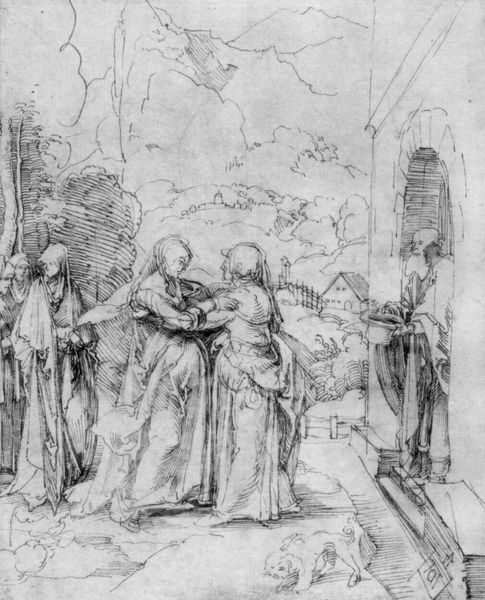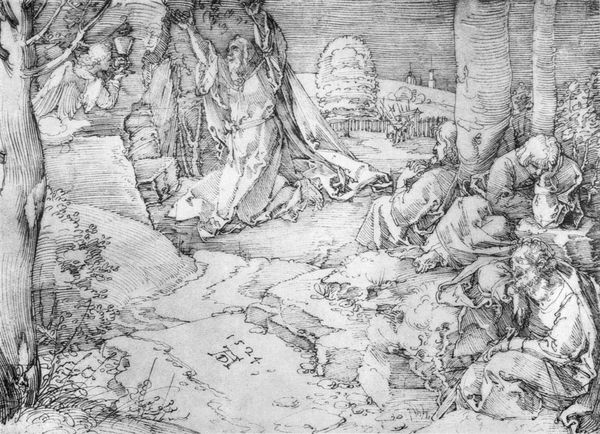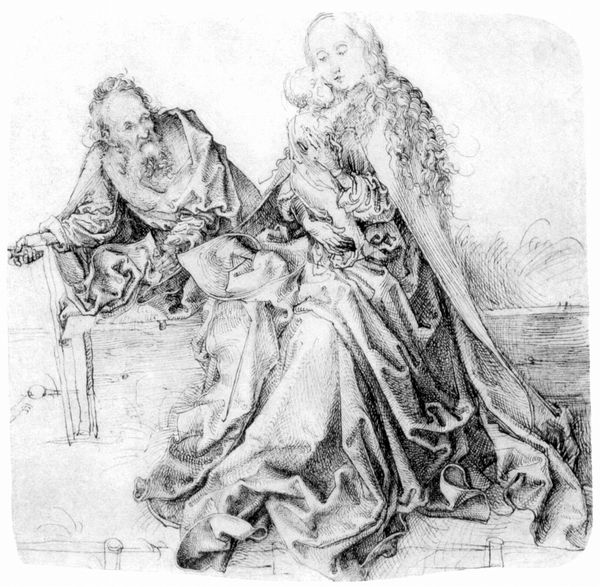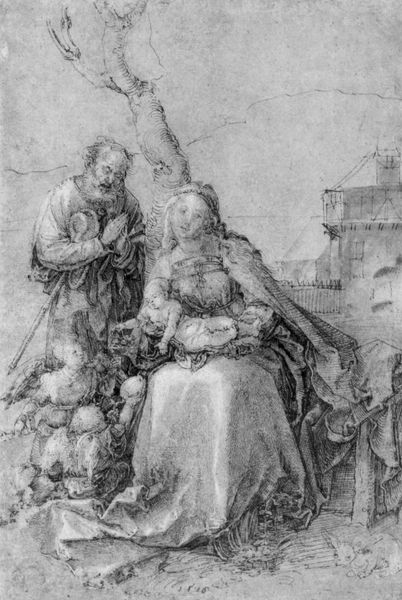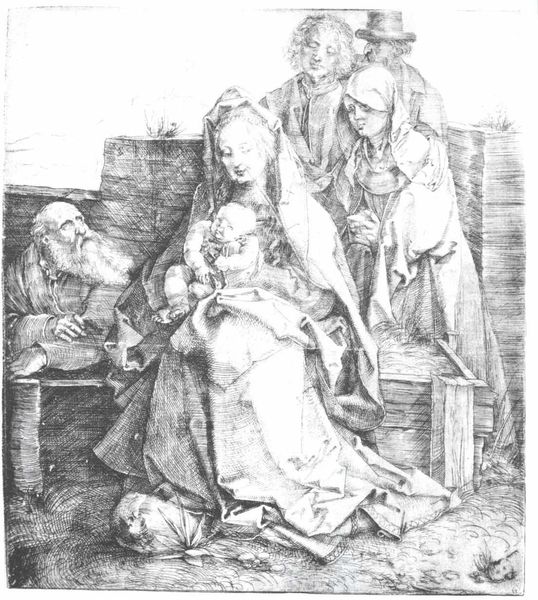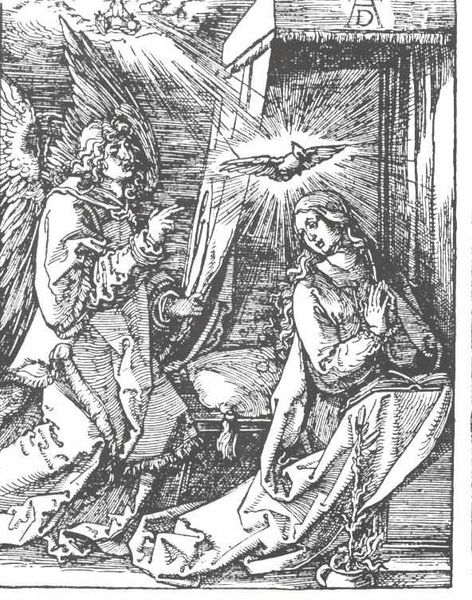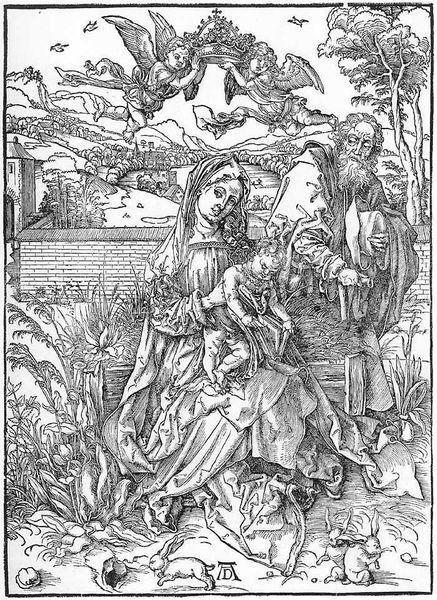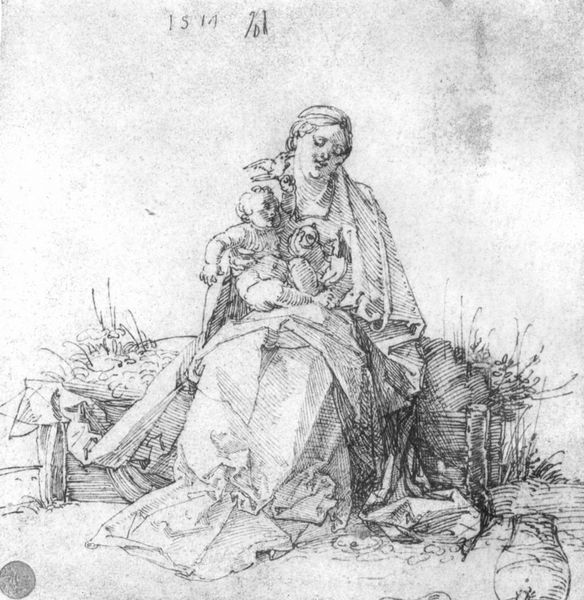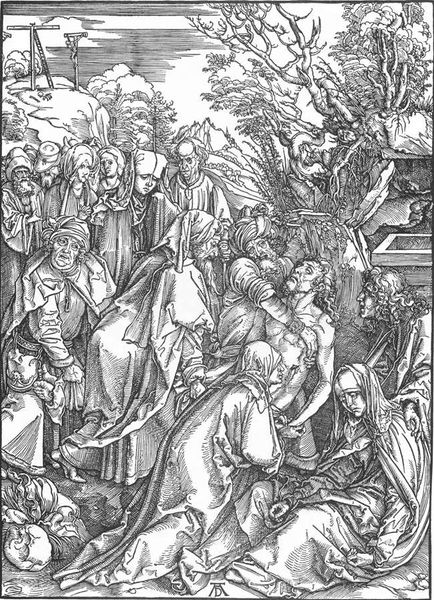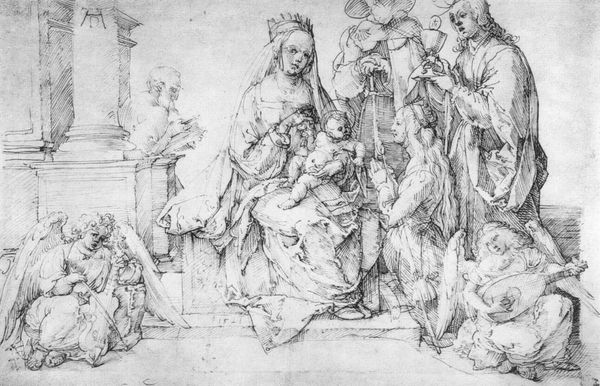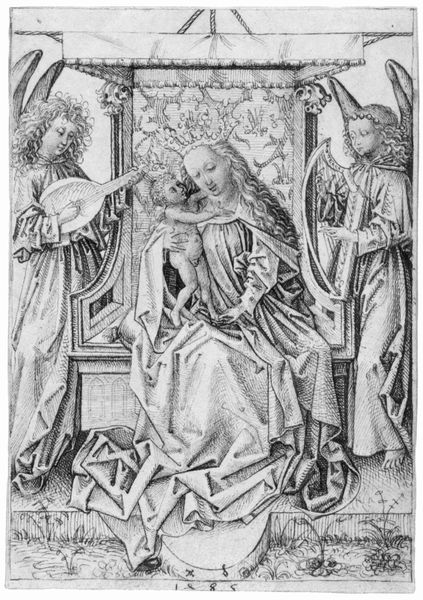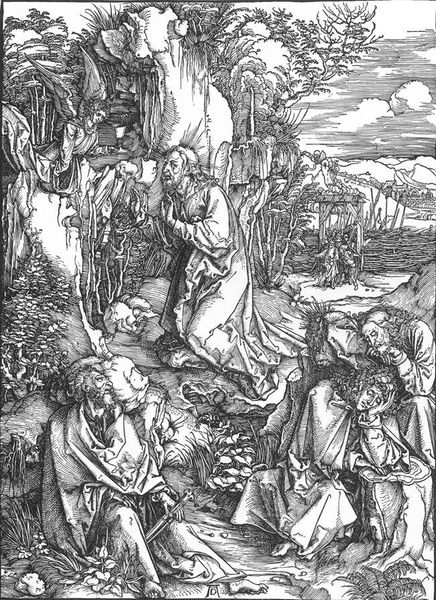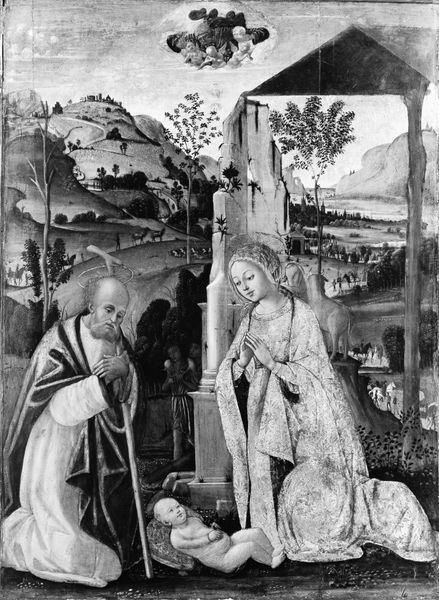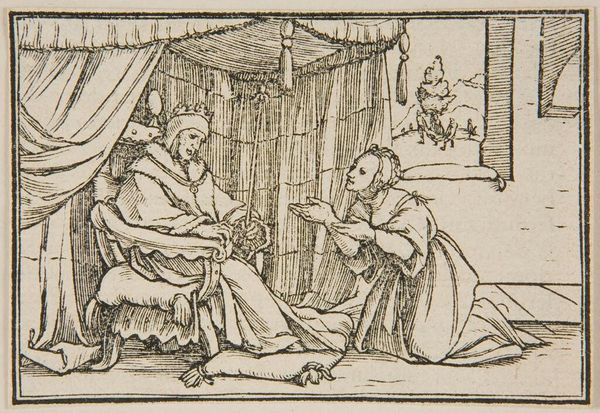
drawing, paper, engraving
#
portrait
#
drawing
#
medieval
#
landscape
#
figuration
#
paper
#
form
#
christianity
#
line
#
pencil work
#
history-painting
#
northern-renaissance
#
engraving
Copyright: Public domain
Editor: This is Albrecht Dürer's "Holy Family" from 1494, made with engraving on paper. The fine lines and detail are really striking, giving the work this amazing textural quality. What are your thoughts on how the physical process of engraving affects the image we see? Curator: The intense labor that goes into engraving is key. Think of Dürer meticulously carving lines into a metal plate. This wasn't just image-making, it was also manufacturing. How might this intense hand-work shape our understanding of its subject matter? Does it ennoble the idea of family in some way? Editor: I hadn't considered it like that, but it makes sense. All the detail given to clothes and the landscape might not be just for visual interest, but about elevating the scene's importance. But Durer printed many of these, how does the reproductive nature change its significance? Curator: Exactly! That's where things get interesting. It becomes a commodity. Dürer wasn't just creating a unique object; he was engaging in a visual marketplace. Who had access to it, and what would this mass production mean in 1494? How does access change it, for example when you compare with unique art objects made for wealthy patrons? Editor: So it's not just about the image itself, but about the labour, access and the system of production that creates it? Curator: Precisely. The materials and the process are inseparable from the artwork’s cultural meaning and impact. And it reminds us to consider our own context and access today! Editor: I hadn't thought of approaching art quite this way. Now I'm wondering about other examples and ways that labour connects to value. Thanks for the insight!
Comments
No comments
Be the first to comment and join the conversation on the ultimate creative platform.
